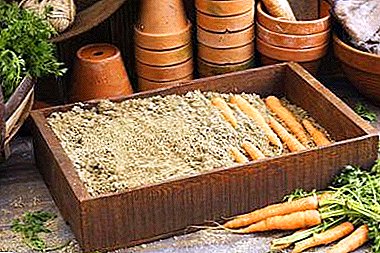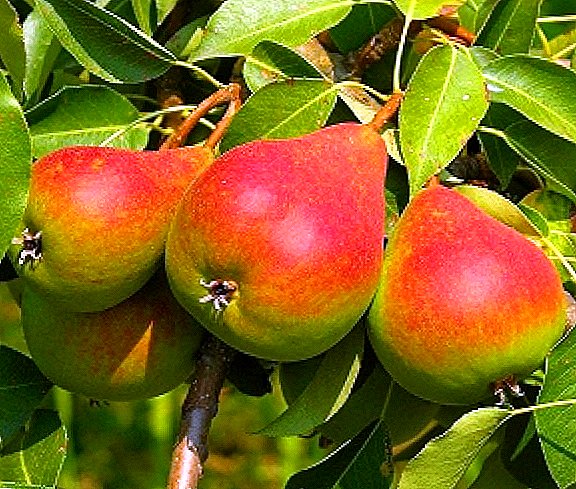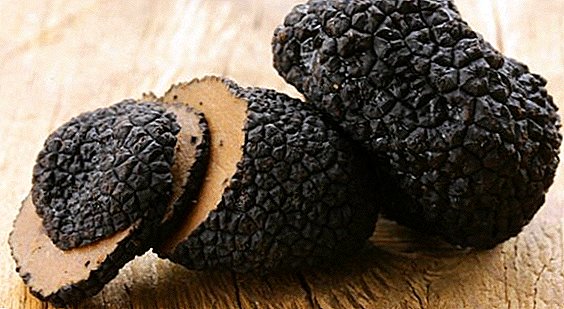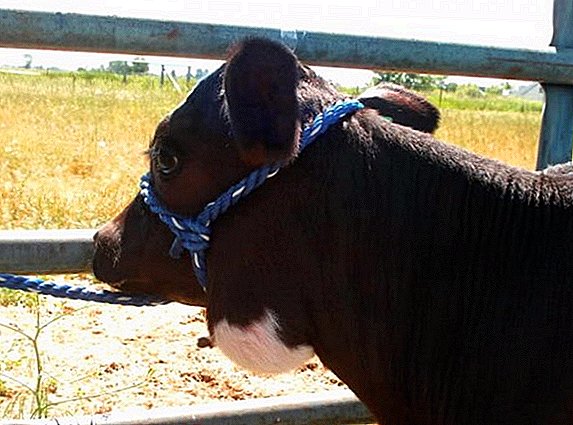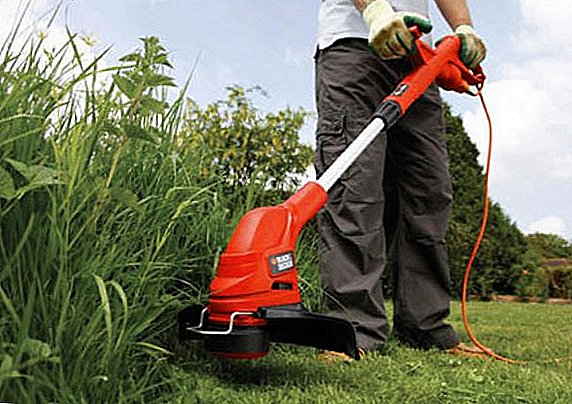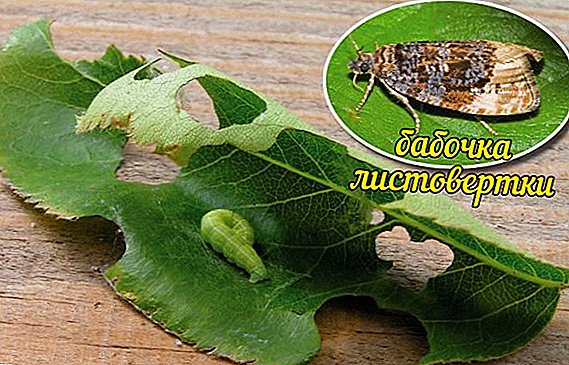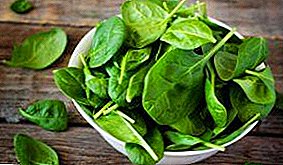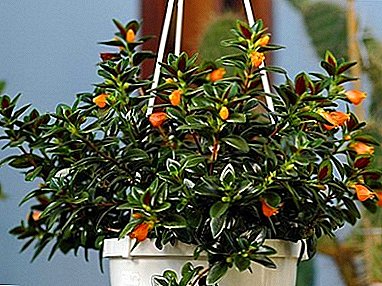
Hypocirta is becoming increasingly popular among lovers of indoor plants and serves as a wonderful decoration of any apartment.
The plant pleases with its flowering for a very long time - almost half a year.
Description
Hypocirta belongs to the family Gesnerievyhcomprising about twelve species.
Delivered plant from South America. The leaves are dark green, pointed, with a purple shade on the reverse side.
The foliage of the plant serves as a storage of moisture in case there is no water in the soil.
When flowering at the base of the leaves, peculiar flowers appear: swollen and resembling tubes. Plant height depends on its type: semi-upright reach a height of 60 cm, and creeping - 15 cm.
This flower grows well with other species of the Gesneriev family.
Views and photos
The most common hypothyroids are considered. monetary and hypocierte naked.
Coin
Hypocirta monetary refers to ampelous species of plants. She has round and fleshy short leaves, stems with a pile and reddish flowers with a bending back corolla of a yellow shade. The hypocyrta coin loses all its leaves after flowering. Below in the photo we can see how the hypocyrtic coin looks like:


Naked
Hypocirta nude refers to semi-bulbous species of plants, having glossy leaves in the shape of an ellipse and 4 cm long. The flowers are orange, swollen downwards. After flowering, the leaves do not fall off. In the photo below we can see what a hypothyrc looks naked:


Home care
Care after purchase
For the purchased plant is best to choose a place with bright lighting, but away from the scorching sun in summer, as the leaves are prone to burns. In winter, the plant also needs good lighting, albeit artificial. When airing the room in which the flower is placed, should guard him from the cold air in winter.
Pruning
Flowering plant starting since spring and ending at the beginning the fall. Immediately after flowering, shoots should be cut to one third, providing better tillering and numerous flowering. Flowers appear on young shoots.
Watering
 In hot weather, she loves abundant watering, by the middle of autumn it is gradually reduced. In winter, water less frequently. Water should be lukewarm.
In hot weather, she loves abundant watering, by the middle of autumn it is gradually reduced. In winter, water less frequently. Water should be lukewarm.
Landing
For planting choose plants loose soil consisting of equal portions of humus, peat, leaf soil and sand. You can buy ready-made soil for Saintpaulia.
Transfer
Transplant hypocyrt can once a couple of years in the spring, as it is slowly growing. At the bottom of the tank it is necessary to pour drainage in order to avoid root rot. The pot should be chosen not too voluminous, because the roots of the flower are small.
Growing up
In summer, the flower is better to provide good moisture, sprinkling the area around it. You can put the container with water and pebbles near the hypocytes.
During the period of activity, it is desirable to fertilize the plant with mineral preparations intended for indoor flowering vegetation. It is not necessary to feed a flower in winter, thereby ensuring its peace.
Breeding
For breeding use grafting method. To do this, cut off the shoots with five nodes and remove the lower leaves. They are placed in water or a wet mixture of peat and sand. Cover the cuttings planted in the substrate, glass transparent container. Can be covered with a bag or film. Spray and air should be every day. After the roots appear, the cuttings are planted in small pots. If it is a monetary hypocyrt, it is better to plant three seedlings in the pot, so the plant will have a beautiful appearance.
A hypocyrt is planted bare by one seedling, as it is more bushy. To enhance the pomp pinch the top.
Temperature
 Hypocirta does not like drafts and temperature drops at all. In the summer, it is better to keep it at 22-25 degrees, in the winter - at 12-15 degrees.
Hypocirta does not like drafts and temperature drops at all. In the summer, it is better to keep it at 22-25 degrees, in the winter - at 12-15 degrees.
Lighting
Both in summer and in winter, a good bright light is needed, while it should be shaded on sunny days.
Benefit and harm
The flower is used as a decorative flower. The plant is very original, especially during the flowering period.
Diseases and pests
Hypocirta is prone to rot infestation with sulfur and powdery mildew.
For treatment, the affected shoots should be removed and treated with a solution of a fungicidal agent.
It is better to reduce the irrigation procedure to the minimum.
The flower is prone to infestation by aphids, shield and whitefly.
The plant should be treated with a special preparation for pests.
Also, the hypocyrt should be placed in a cool place, as aphids often start up when the air is too dry.
Excessive moisture and cold air leads to fall of buds and foliage. Yellowing of the leaves indicates an excess of light or dry air. Excessive fertilizer also leads to yellowing and a change in shade.
When watering with low temperature or lack of regularity, brownish spots appear on the hypogyrist in the irrigation. If the plant blooms poorly or does not bloom at all, it means that the soil is depleted, there is not enough light, the temperature of the content is inappropriate. Also, the plant does not bloom, if the old shoots were not cut.
Conclusion
 Hypocytes can be found more often in culture, because the plant has a long flowering period and has a peculiar bright flower buds.
Hypocytes can be found more often in culture, because the plant has a long flowering period and has a peculiar bright flower buds.
The leaves are also very attractive due to their glossy surface and shape.
The flower grows well in rooms and does not require efforts to grow it.


